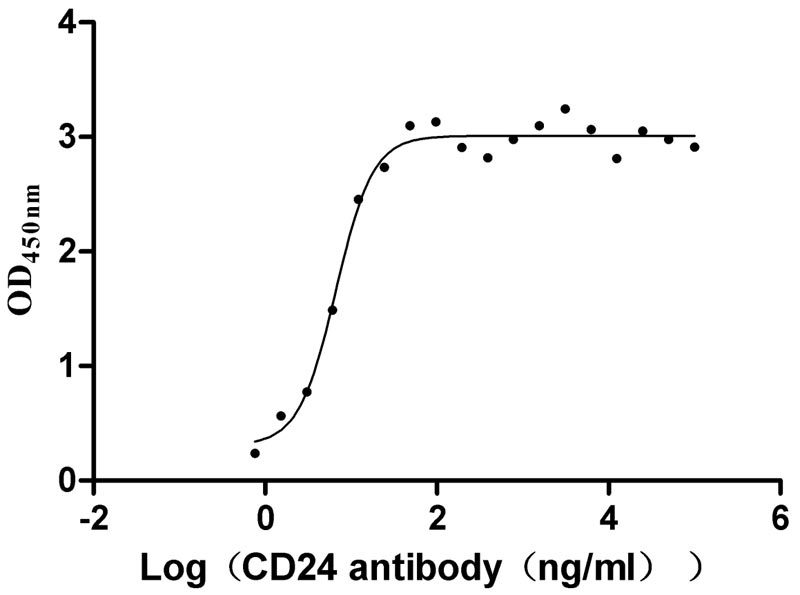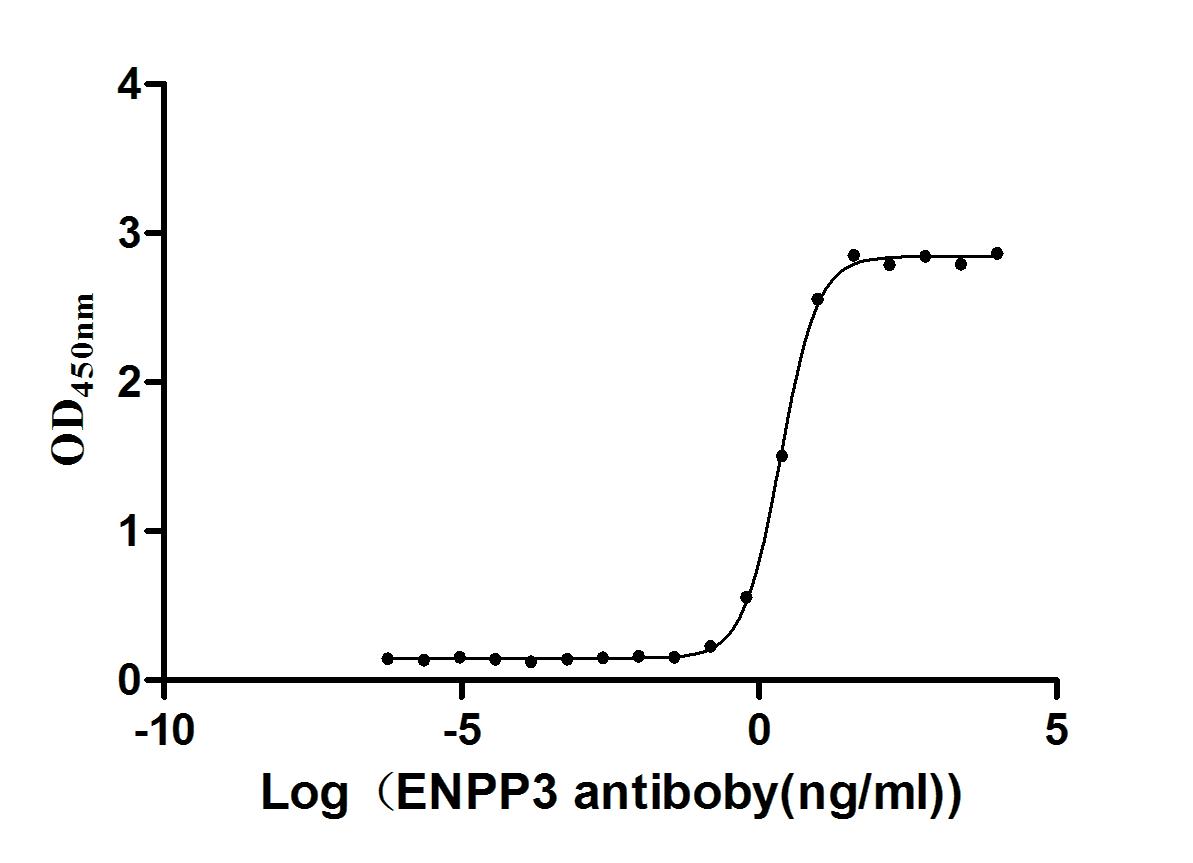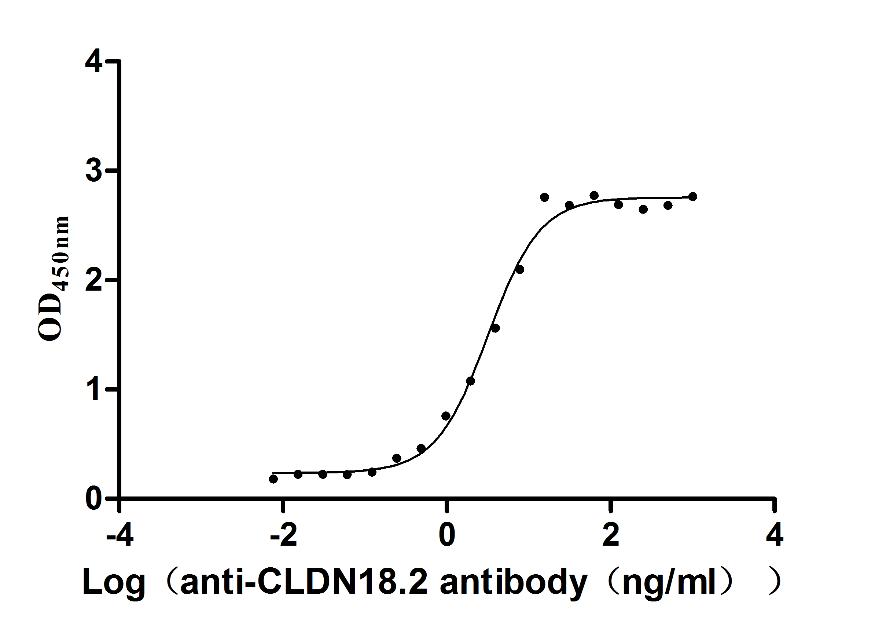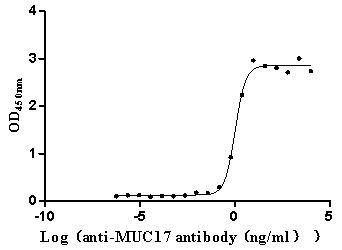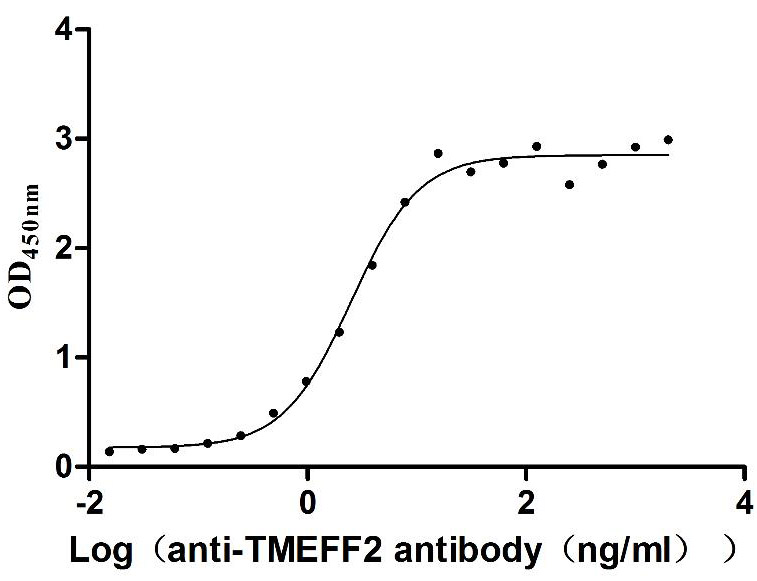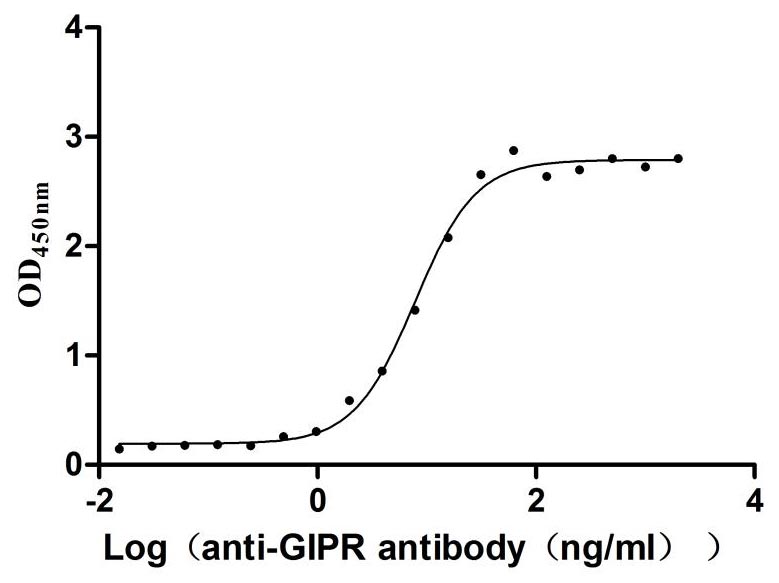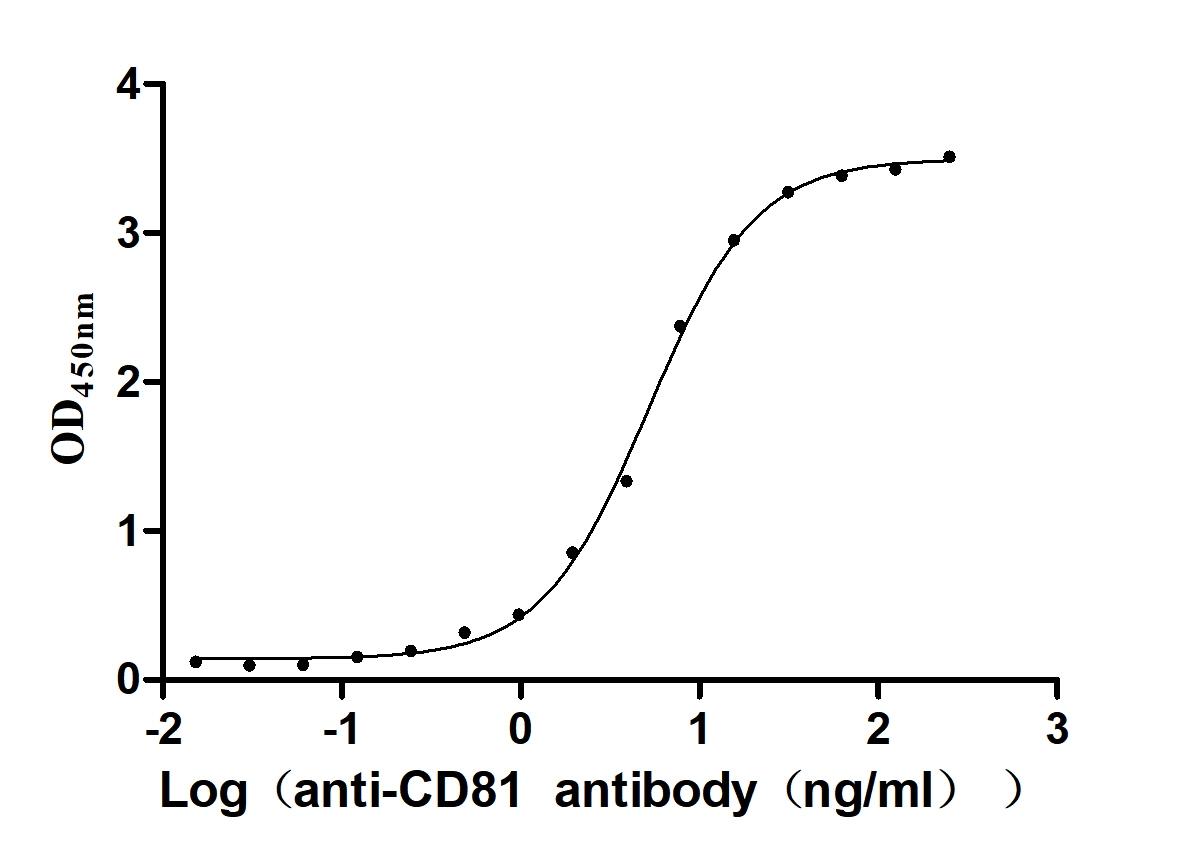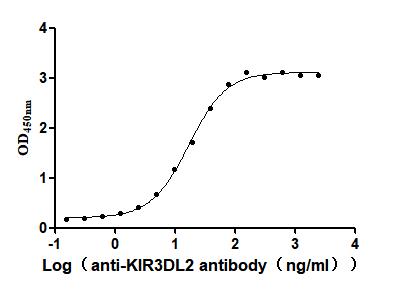Recombinant Human Anoctamin-5 (ANO5), partial
-
中文名称:Recombinant Human Anoctamin-5(ANO5) ,partial
-
货号:CSB-YP741706HU
-
规格:
-
来源:Yeast
-
其他:
-
中文名称:Recombinant Human Anoctamin-5(ANO5) ,partial
-
货号:CSB-EP741706HU-B
-
规格:
-
来源:E.coli
-
共轭:Avi-tag Biotinylated
E. coli biotin ligase (BirA) is highly specific in covalently attaching biotin to the 15 amino acid AviTag peptide. This recombinant protein was biotinylated in vivo by AviTag-BirA technology, which method is BriA catalyzes amide linkage between the biotin and the specific lysine of the AviTag.
-
其他:
-
中文名称:Recombinant Human Anoctamin-5(ANO5) ,partial
-
货号:CSB-BP741706HU
-
规格:
-
来源:Baculovirus
-
其他:
产品详情
-
纯度:>85% (SDS-PAGE)
-
基因名:ANO5
-
Uniprot No.:
-
别名:Ano5; ANO5_HUMAN; Anoctamin-5; GDD1; Gnathodiaphyseal dysplasia 1 protein; Integral membrane protein GDD1; LGMD2L; Limb girdle muscular dystrophy 2L (autosomal recessive); TMEM16E; Transmembrane protein 16E
-
种属:Homo sapiens (Human)
-
蛋白长度:Partial
-
蛋白标签:Tag type will be determined during the manufacturing process.
The tag type will be determined during production process. If you have specified tag type, please tell us and we will develop the specified tag preferentially. -
产品提供形式:Lyophilized powder
Note: We will preferentially ship the format that we have in stock, however, if you have any special requirement for the format, please remark your requirement when placing the order, we will prepare according to your demand. -
复溶:We recommend that this vial be briefly centrifuged prior to opening to bring the contents to the bottom. Please reconstitute protein in deionized sterile water to a concentration of 0.1-1.0 mg/mL.We recommend to add 5-50% of glycerol (final concentration) and aliquot for long-term storage at -20℃/-80℃. Our default final concentration of glycerol is 50%. Customers could use it as reference.
-
储存条件:Store at -20°C/-80°C upon receipt, aliquoting is necessary for mutiple use. Avoid repeated freeze-thaw cycles.
-
保质期:The shelf life is related to many factors, storage state, buffer ingredients, storage temperature and the stability of the protein itself.
Generally, the shelf life of liquid form is 6 months at -20°C/-80°C. The shelf life of lyophilized form is 12 months at -20°C/-80°C. -
货期:Delivery time may differ from different purchasing way or location, please kindly consult your local distributors for specific delivery time.Note: All of our proteins are default shipped with normal blue ice packs, if you request to ship with dry ice, please communicate with us in advance and extra fees will be charged.
-
注意事项:Repeated freezing and thawing is not recommended. Store working aliquots at 4°C for up to one week.
-
Datasheet :Please contact us to get it.
相关产品
靶点详情
-
功能:Does not exhibit calcium-activated chloride channel (CaCC) activity.
-
基因功能参考文献:
- First direct demonstration of Ca(2+)-dependent Phospholipid scrambling activity for TMEM16E; this suggests a gain-of-function phenotype related to a Gnathodiaphyseal dysplasia mutation. PMID: 29124309
- After Ano5 gene knock-down with shRNA in MC3T3-E1 osteoblast precursors the authors saw elevated expression of osteoblast-related genes such as Col1a1, osteocalcin, osterix and Runx2 as well as increased mineral nodule formation in differentiating cells. The data suggest that ANO5 plays a role in osteoblast differentiation. PMID: 28176803
- The Limb-girdle muscular dystrophy 2L family was characterized by mild chronic myopathy and bilateral gastrocnemius hypertrophy with obviously increased creatine kinase levels. Pathological changes included atrophy of fibers with interstitial connective tissues hyperplasia. The pathogenic allele was a c.220C> T mutation in the ANO5 gene. PMID: 30235762
- A heterozygous mutation in the ANO5 gene c.1067G > A (p.Cys356Tyr) was identified in both affected individuals in a Russian family with giant cementoma and bone fractures consistent with a diagnosis of gnathodiaphyseal dysplasia. PMID: 27216912
- Results show that ANO5 is downregulated in thyroid cancer and, negatively associated with lymph node metastasis. Its inhibition promotes the migration and invasion of thyroid cancer cells suggesting it as a tumor marker. PMID: 28902351
- Study characterized 12 newly identified and 2 previously identified patients with ANO5 mutations from 11 families. Material was genetically homogeneous with most patients homozygous for the Finnish founder variant c.2272C>T (p.Arg758Cys). In one family, study found a novel p.Met470Arg variant compound heterozygous with p.Arg758Cys. PMID: 27911336
- Asymptomatic, sometimes mild hyperCKemia or exercise intolerance is a presentation of ANO5-related myopathy. PMID: 28187523
- Here we show that Ano5-deficient mice have reduced capacity to repair the sarcolemma following laser-induced damage, exhibit delayed regeneration after cardiotoxin injury and suffer from defective myoblast fusion necessary for the proper repair and regeneration of multinucleated myotubes. these data suggest that ANO5 plays an important role in sarcolemmal membrane dynamics. PMID: 26911675
- Study screened the ANO5 gene in 786 myopathic patients and 52 controls by combining NGS and Sanger sequencing. In the cohort of patients, thirty-three are homozygous or compound heterozygous for causative mutations in ANO5 PMID: 25891276
- supervised aerobic exercise training is safe and effective in improving oxidative capacity and muscle function in patients with anoctamin 5 deficiency PMID: 24639367
- The present report describes an association between LGMD2L consequent upon mutation in ANO5 and macular dystrophy in one affected person. PMID: 24232312
- Dilated cardiomyopathy is associated with mutations in the ANO5 gene. PMID: 23041008
- ANO5 mutations can be associated with amyloid deposition in muscle PMID: 23663589
- A high prevalence of ANO5 deficiency was found among patients with unclassified recessive limb girdle muscular dystrophy 2 PMID: 23670307
- a diagnosis of ANO5 causing Muscular Dystrophy, Limb-Girdle, Type 2L, in 16% of the families (11/68) in a well-defined limb girdle muscular dystrophy cohort in the Netherlands PMID: 23607914
- investigated the prevalence and spectrum of ANO5 gene mutations and related clinical phenotypes; study confirmed that ANO5 gene mutations are responsible for about one fourth of cases of undiagnosed muscular dystrophy in the population studied PMID: 23606453
- This study showed that TMEM16E possesses distinct function other than chloride channel activity, and another protein-stabilizing machinery toward the TMEM16E proteins should be considered for the on-set regulation of their phenotypes in tissues. PMID: 23843187
- By sequencing the entire ANO5 gene coding region and untranslated regions in a large Italian gnathodiaphyseal dyplasia family, a novel missense mutation causing the p.Thr513Ile substitution, was found. PMID: 23047743
- occurrence and molecular epidemiology of LGMD2L, caused by mutations in the anoctamin 5 (ANO5) gene, in a Italian cohort differed from those observed in other European countries. PMID: 22742934
- This study demonistrayed that anoctamin 5 mutations associate to distal muscular dystrophy. PMID: 22980764
- A family is described in which 2 mutations in ANO5 segregate with marked creatine kinase-type hypercreatinemia, demonstrating that recessively inherited ANO5 mutations not only lead to muscular dystrophy but may also cause bone disease. PMID: 23055322
- The c.191dupA mutation, already reported as a founder mutation in Caucasian patients with anoctamin myopathies, was found in our family in a heterozygous state. PMID: 22336395
- This study identified four novel mutations in the ANO5 gene cause high lever Creatine Kinase and limb girdle muscular weakness and Miyoshi type of muscular dystrophy. PMID: 22499103
- Mutations are distributed all over the gene, indicating that muscular dystrophy caused by ANO5 can be expected to occur in all populations PMID: 22402862
- mutation in patients with a distal myopathy;(a new separate clinical, genetic and histopathologic entity) PMID: 20692837
- A founder mutation in Anoctamin 5 is a major cause of limb-girdle muscular dystrophy. PMID: 21186264
- Recessive mutations were identified in ANO5 that result in a proximal limb-girdle muscular dystrophy (LGMD2L) in three French Canadian families and in a distal non-dysferlin Miyoshi myopathy (MMD3) in Dutch and Finnish families. PMID: 20096397
显示更多
收起更多
-
相关疾病:Gnathodiaphyseal dysplasia (GDD); Limb-girdle muscular dystrophy 2L (LGMD2L); Miyoshi muscular dystrophy 3 (MMD3)
-
亚细胞定位:Endoplasmic reticulum membrane; Multi-pass membrane protein. Cell membrane; Multi-pass membrane protein.
-
蛋白家族:Anoctamin family
-
组织特异性:Highly expressed in brain, heart, kidney, lung, and skeletal muscle. Weakly expressed in bone marrow, fetal liver, placenta, spleen, thymus, osteoblasts and periodontal ligament cells.
-
数据库链接:
Most popular with customers
-
Recombinant Human Signal transducer CD24 (CD24)-Nanoparticle (Active)
Express system: Mammalian cell
Species: Homo sapiens (Human)
-
Express system: Mammalian cell
Species: Homo sapiens (Human)
-
Recombinant Macaca fascicularis Claudin 18.2 (CLDN18.2)-VLPs (Active)
Express system: Mammalian cell
Species: Macaca fascicularis (Crab-eating macaque) (Cynomolgus monkey)
-
Recombinant Human Mucin-17 (MUC17), partial (Active)
Express system: Mammalian cell
Species: Homo sapiens (Human)
-
Recombinant Human Tomoregulin-2 (TMEFF2), partial (Active)
Express system: Mammalian cell
Species: Homo sapiens (Human)
-
Recombinant Rat Gastric inhibitory polypeptide receptor (Gipr), partial (Active)
Express system: Mammalian cell
Species: Rattus norvegicus (Rat)
-
Recombinant Human CD81 antigen (CD81), partial (Active)
Express system: Mammalian cell
Species: Homo sapiens (Human)
-
Recombinant Human Killer cell immunoglobulin-like receptor 3DL2 (KIR3DL2), partial (Active)
Express system: Mammalian cell
Species: Homo sapiens (Human)


